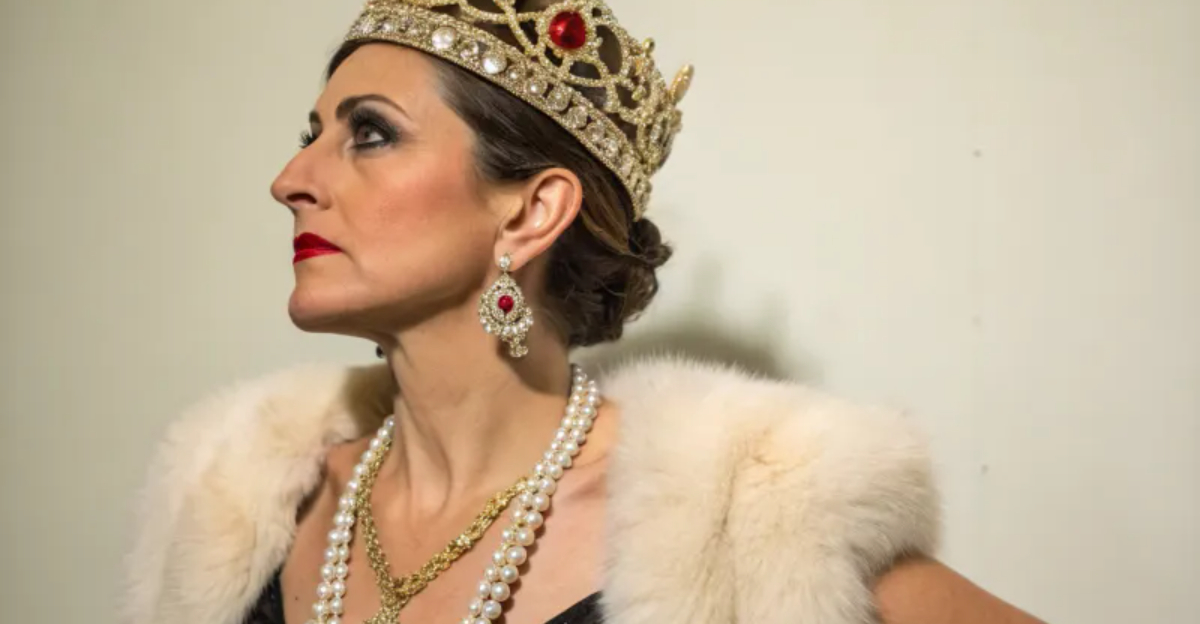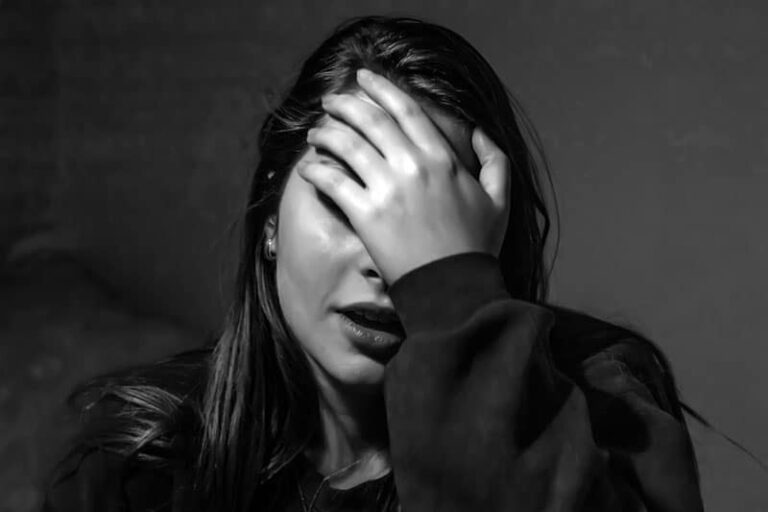25 Ways To Spot A Narcissistic Person By The Way They Dress, According To Psychology
Have you ever wondered how a person’s clothing choices might reveal deeper aspects of their personality, particularly traits associated with narcissism? Clothing is not just a means of self-expression; it can also be a window into one’s psychological makeup.
I will walk you through 25 distinctive ways to identify narcissistic tendencies by the way someone dresses, offering insights into how certain fashion choices can signal an excessive need for attention, control, and validation.
1. Excessive Use of Flashy Outfits
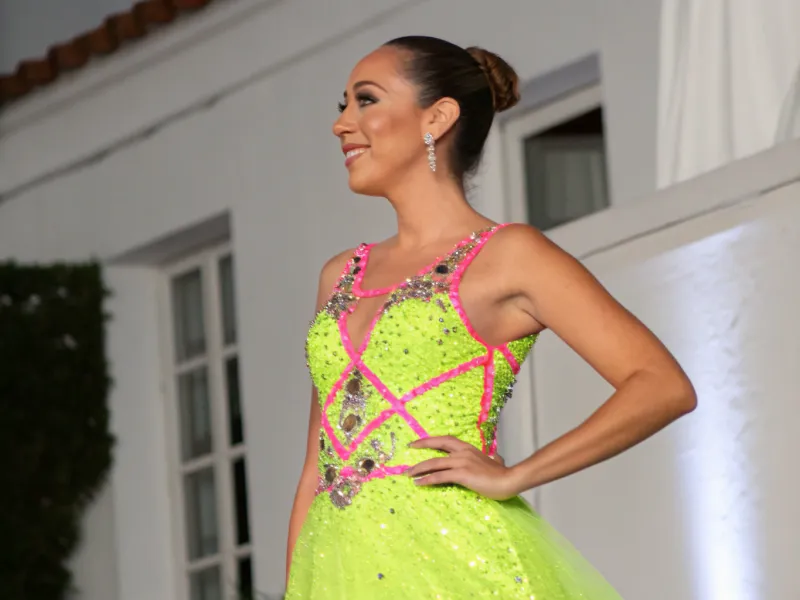
Some individuals have a knack for turning heads wherever they go, not because of their charm or charisma, but because of their excessively flashy wardrobe choices. Narcissistic individuals often opt for clothing that screams for attention, with bright colors, sequins, or overly extravagant designs. These choices aim to ensure that all eyes are on them, fulfilling their deep-seated need for admiration and validation.
Imagine a scene in a park where most people are dressed casually, perhaps in jeans and t-shirts, enjoying a relaxed afternoon. Amidst this, a person walks in wearing a neon-colored, sequined jacket that catches and reflects every ray of sunlight. Such a choice is not just about personal style; it’s a calculated move to stand out, often at the expense of appropriateness for the occasion.
Psychologically, this behavior ties into a narcissist’s desire to dominate social settings by overshadowing others, asserting their presence, and demanding attention through their apparel. The louder the outfit, the louder the cry for attention, and for narcissists, this is a crucial part of their self-identity.
2. Inappropriate Dressing for Occasions
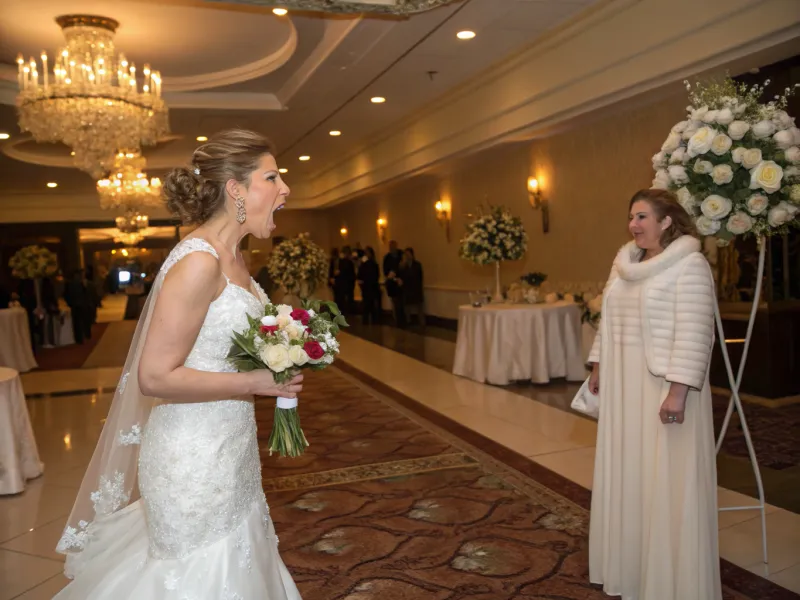
It’s often said that one should dress for the occasion, but for some, every occasion is a stage for showcasing their superiority or distinctiveness, regardless of appropriateness. Narcissistic individuals may turn up at a casual beach party in a tuxedo or evening gown. At first glance, such choices might seem eccentric or humorous, but they reveal a deeper psychological game at play.
The idea here is not just to turn heads but to ensure that the spotlight remains on them, controlling the narrative of the event by making everything revolve around their unexpected attire. By disregarding social norms, they set themselves apart, feeding their sense of uniqueness and superiority.
From a psychological perspective, this behavior underscores their need to be at the center of attention, often at the expense of blending in or respecting the event’s tone. It’s a subtle yet powerful way of asserting dominance and controlling how others perceive the social dynamics in play.
3. Impractical Fashion Choices

While fashion can be a fun and creative outlet, some take it to the extreme by prioritizing style over practicality. Narcissistic individuals often choose high-maintenance fashion, such as stiletto heels for a hiking trip, to project an image of sophistication and superiority. These choices are not just about looking good; they are about communicating to the world that they are above ordinary practical concerns.
Consider a scene where everyone is geared up for a hike, wearing comfortable boots and outdoor apparel. Among them, someone decides to wear stiletto heels, making every step a challenge. This not only draws attention but also subtly signals a disdain for practicality and the norms followed by others.
Psychologically, this reflects a narcissist’s need to maintain an image that sets them apart, showcasing their perceived importance and distinctiveness. It’s a way to assert superiority by implying that they don’t have to adhere to the same rules as everyone else, even if it comes at the cost of personal comfort.
4. Constant Style Changes
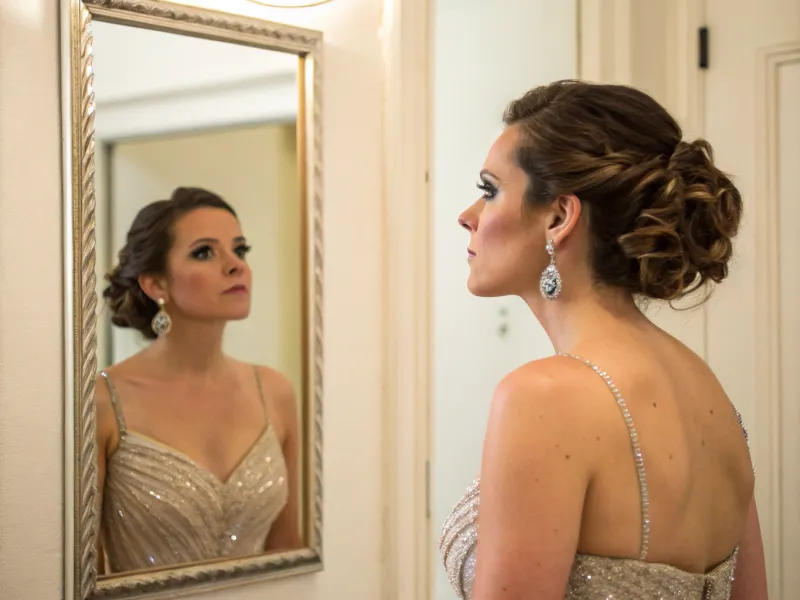
Change is the only constant for some, especially when it comes to their wardrobe. Narcissistic individuals often exhibit a chameleon-like ability to alter their fashion style frequently, mirroring the latest trends and styles to impress others. This isn’t just about being fashionable; it’s about strategically crafting an image that will garner the most attention and admiration.
In a world where trends change with the seasons, these individuals adopt a revolving door of styles, ensuring that their appearance never grows stale or unremarkable. Picture a person who, one week, embraces bohemian chic, and the next, switches to a sleek, minimalist aesthetic. Such rapid transformations are less about personal evolution and more about maintaining an aura of intrigue and desirability.
Psychologically, this reflects a narcissist’s need for external validation, where the approval and admiration of others fuel their self-worth. By constantly reinventing their look, they keep others guessing and engaged, a crucial tactic for securing the attention they crave.
5. Manipulative Fashion Choices

Clothing can be a powerful tool to manipulate perceptions, and some use it to craft shifting personas depending on the setting. A narcissistic individual might wear a business suit to a family picnic, not for comfort, but to project a controlled, powerful image. This calculated choice is about controlling how others perceive them, shifting personas to suit their needs.
Imagine attending a relaxed family gathering where everyone is dressed comfortably, yet one person arrives in a sharp business suit. This isn’t merely a fashion statement; it’s a strategic move to assert dominance and competence, even in casual settings. By dressing in a manner that contrasts with the norm, they dictate the terms of how they are viewed.
Psychologically, this reflects their need to maintain an image of superiority and control, leveraging clothing as a means to influence and dictate social dynamics. It’s not just about what they wear, but how they use those choices to manipulate interactions and boost their self-image in various environments.
6. Obsession with Designer Labels

For some, designer labels are more than just fashion choices; they are badges of honor, signifying status and success. Narcissistic individuals often obsess over brand logos, flaunting them as symbols of their worth and superiority. This goes beyond mere appreciation for quality; it’s about using brands to broadcast their self-perceived elite status.
Picture a scene in a local café where someone meticulously arranges their designer handbags on the table, each piece prominently showcasing its iconic logo. This display isn’t just about style; it’s a calculated move to signal wealth and sophistication, demanding recognition and envy from onlookers.
Psychologically, this behavior is tied to a narcissist’s need for validation through external symbols of success. By associating themselves with high-status brands, they reinforce their desired self-image and project an aura of exclusivity and privilege. Designer labels become a tool for asserting dominance, an overt message that they belong to an elite class.
7. Avoidance of Casual Looks
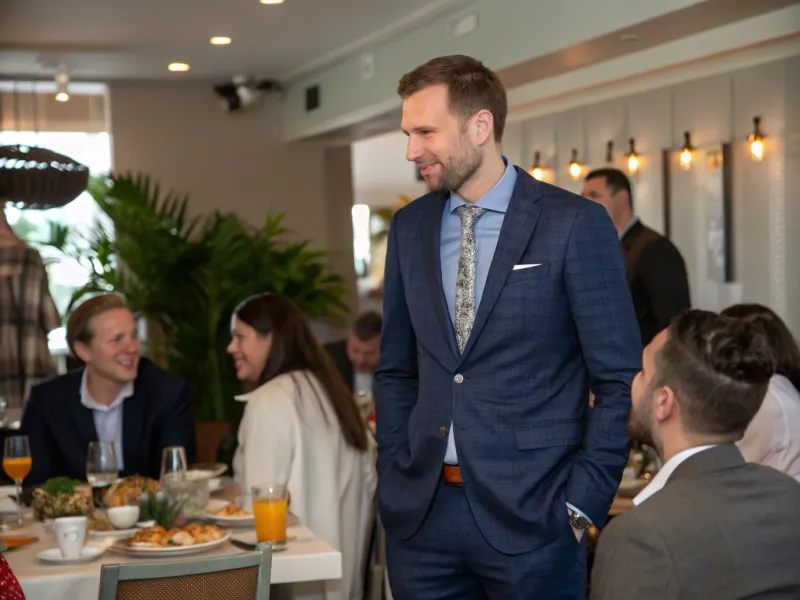
For some, the idea of dressing down is unthinkable. Narcissistic individuals often feel compelled to present an overly polished image, avoiding casual attire altogether. This isn’t about simply looking presentable; it’s about crafting a consistently superior image.
Imagine arriving at a casual brunch where most people are comfortably dressed in jeans and t-shirts, yet one person stands out in a perfectly tailored suit. This choice isn’t about fitting in, but about standing apart, projecting a sense of importance and control over their image at all times.
Psychologically, this reflects a narcissist’s fear of vulnerability associated with casualness. They equate casual attire with a loss of status, preferring to maintain a meticulously crafted persona that exudes success and confidence. By avoiding casual looks, they ensure that they are always perceived as authoritative and significant, reinforcing their need for admiration and respect.
8. Criticism of Others’ Fashion

Some individuals elevate their sense of self-worth by belittling others, and fashion is a common battleground. Narcissistic individuals often criticize or mock others’ clothing choices, using it as a way to assert their superiority and reinforce their own self-image.
Picture this: at a vibrant fashion show, as models and guests showcase diverse styles, one person stands apart, not in celebration but in critique. With a discerning eye and a superior air, they offer unsolicited fashion advice or dismissive remarks about others’ outfits.
Psychologically, this behavior is a defense mechanism, a way to mask insecurities by deprecating others. By placing themselves on a pedestal, they reinforce their self-importance and project confidence. It’s not just about the clothes themselves, but how they use these critiques to elevate their own status, often at the expense of others’ self-esteem.
9. Overly Coordinated Outfits
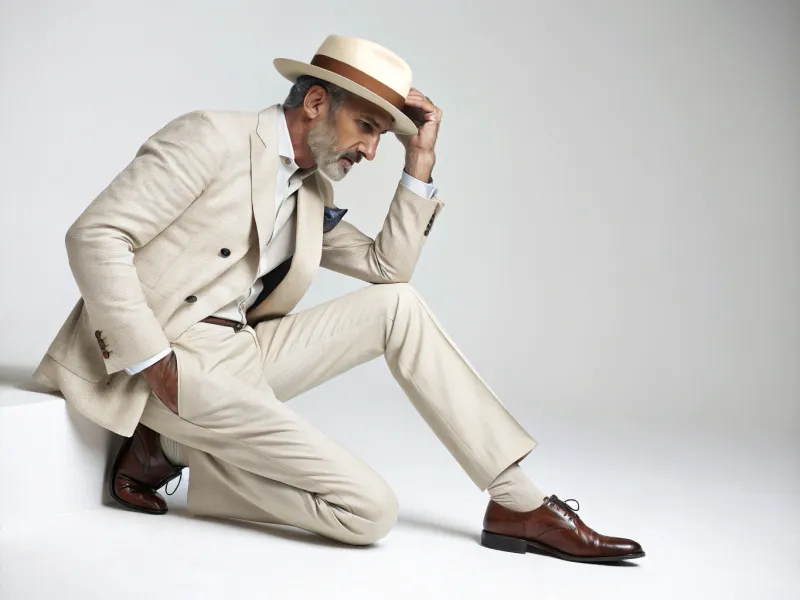
For some, every piece of clothing must serve a purpose and align with a meticulously crafted image. Narcissistic individuals often exhibit an obsession with perfectly coordinated outfits, ensuring that every element of their attire is in harmony.
Imagine seeing someone at a casual outing, where most are relaxed and dressed in a mix of styles. Yet, one individual stands out with an outfit so impeccably matched—from the hat to the shoes—that it seems almost choreographed. This isn’t just a love for fashion; it’s a precise execution of an image.
Such coordination is more than aesthetic; it’s a reflection of their need for control and perfection. By presenting an overly coordinated look, they communicate an image of flawlessness that they believe demands admiration. It’s as if each piece of clothing is a brushstroke on the canvas of their public persona, crafted to perfection, leaving nothing to chance.
10. Use of Exclusive Accessories
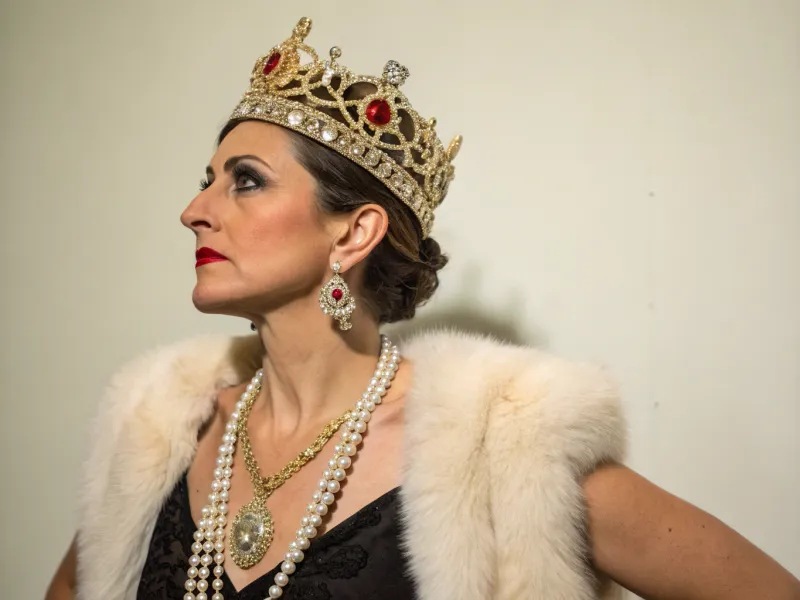
For some, accessories are more than just a complement to an outfit; they are key to showcasing exclusivity and status. Narcissistic individuals often flaunt exclusive or limited edition accessories as a way to distinguish themselves from the crowd.
Imagine attending a social event where everyone is mingling and having casual conversations. Amidst this, one person ensures their limited edition watch is visible, drawing attention to its rarity and prestige. This isn’t just about style; it’s a strategic move to assert their unique status and evoke envy.
Psychologically, this behavior reflects their need for external validation and admiration. By owning and displaying exclusive items, they reinforce their status as part of an elite group, feeding their self-esteem and projecting an image of superiority. Such accessories become symbols of their perceived uniqueness and a means to command attention and respect.
11. Excessive Grooming

Grooming is a natural part of personal care, but for some, it becomes an obsessive ritual aimed at maintaining an impeccable appearance. Narcissistic individuals often engage in excessive grooming, ensuring that every aspect of their attire and appearance is flawless.
Picture this: at a vibrant party, while others enjoy the moment, one person is preoccupied with adjusting their attire, checking their reflection in every available surface. This isn’t mere vanity; it’s a compulsion driven by the need to present a perfect image.
Psychologically, this behavior ties into their fear of imperfection and the associated vulnerability. By maintaining an impeccably groomed appearance, they reinforce their self-image and mask insecurities. It’s not just about looking good; it’s about projecting an image of control and confidence, ensuring they stand out in any social setting.
12. Wearing Overly Trendy Pieces
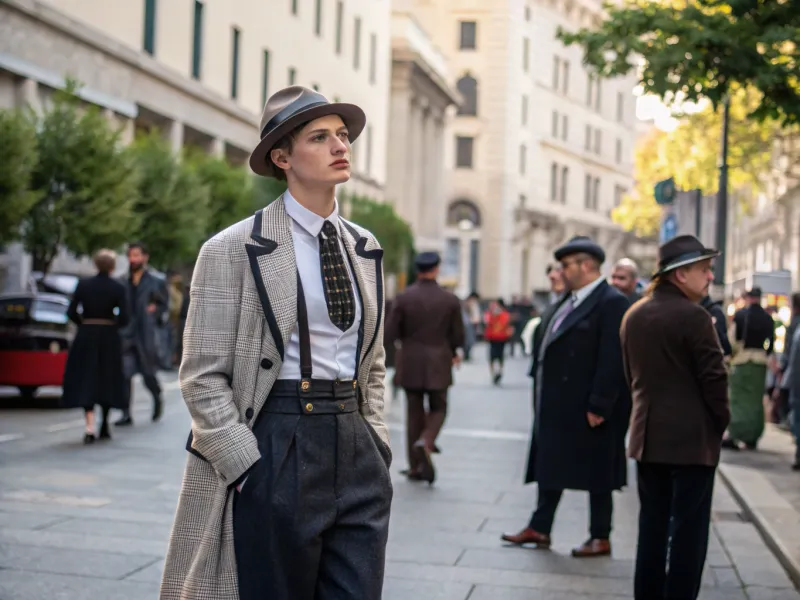
For some, staying ahead in the fashion game is more than a hobby; it’s a necessity. Narcissistic individuals often gravitate towards the latest trendy pieces, eager to be perceived as ahead of the curve and fashion-forward.
Visualize a gathering where everyone is dressed in timeless, classic attire, yet one person stands out in the latest fashion trend, something so new that it captures immediate attention. This isn’t just about personal style; it’s a deliberate choice to be perceived as cutting-edge and avant-garde.
Psychologically, this behavior reflects their desire for admiration and their fear of being seen as ordinary. By aligning themselves with the newest trends, they position themselves as trendsetters, feeding their ego with the attention and respect they crave. It’s a strategy to ensure they remain at the forefront of others’ minds, reinforcing their self-worth through fashion.
13. Use of Fashion as Armor

For some, clothing serves as more than just a shield from the elements; it’s armor that projects strength and authority. Narcissistic individuals often use fashion as a means to assert dominance and control in various social settings.
Consider a scenario at a casual meeting, where most attendants are dressed comfortably. One person, however, chooses a power suit, projecting an image of authority and control. This choice is not merely about style; it reflects a strategic move to command respect and influence.
Psychologically, this behavior underscores their need to maintain an image of superiority and dominance. By using fashion as armor, they craft an image that demands attention and reinforces their perceived status. It’s not just about the clothes themselves, but how they use them to manipulate perceptions and assert their place in the social hierarchy.
14. Love for Bold Patterns

For some, subtlety in fashion is an alien concept. Narcissistic individuals often gravitate towards bold patterns, eager to express their uniqueness and demand attention through their attire.
Imagine attending a muted, formal event where understated elegance is the norm. Among the guests, one person stands out in a bold, geometric-patterned outfit, drawing all eyes. This isn’t just a fashion choice; it’s a declaration of individuality.
Psychologically, this reflects their need for recognition and their discomfort with blending in. By wearing bold patterns, they ensure they are noticed and remembered, asserting their presence in any room. It’s a way to communicate their self-perceived uniqueness and demand the attention they believe they deserve.
15. Preoccupation with Appearances
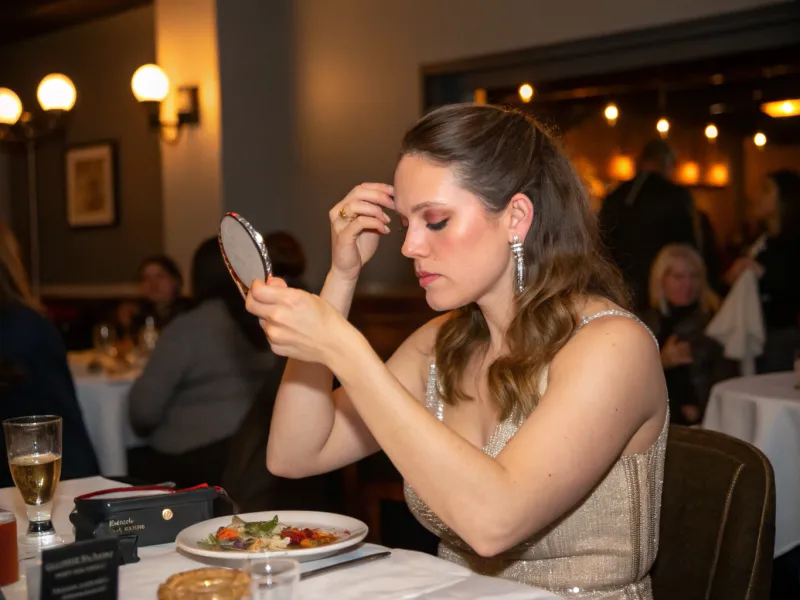
For some, maintaining a perfect image is a constant endeavor. Narcissistic individuals often exhibit a preoccupation with their appearance, ensuring every detail is meticulously arranged.
Picture this: during a casual dinner, while others are engaged in conversation, one person repeatedly checks their reflection in reflective surfaces. This isn’t merely vanity; it’s an obsessive need to maintain control over their image.
Psychologically, this behavior stems from insecurities about their self-worth. By ensuring their appearance is flawless, they mask vulnerabilities and project confidence. It’s about more than just looking good; it’s about maintaining an image that elicits admiration and respect from others.
16. Perfectionist Wardrobe Choices

For some, even the slightest imperfection is unacceptable. Narcissistic individuals often exhibit perfectionist tendencies in their wardrobe choices, ensuring every piece is pristine and flawless.
Imagine attending a relaxed garden party where others are comfortably dressed, yet one person’s outfit is immaculate, free from wrinkles or blemishes. This isn’t just about being neat; it’s a reflection of their need for control over their image.
Psychologically, this behavior reflects their fear of being perceived as flawed. By maintaining a perfect wardrobe, they project an image of competence and superiority. It’s about more than just the clothes; it’s about asserting their self-worth through an impeccably crafted appearance.
17. Use of Clothing to Signal Wealth
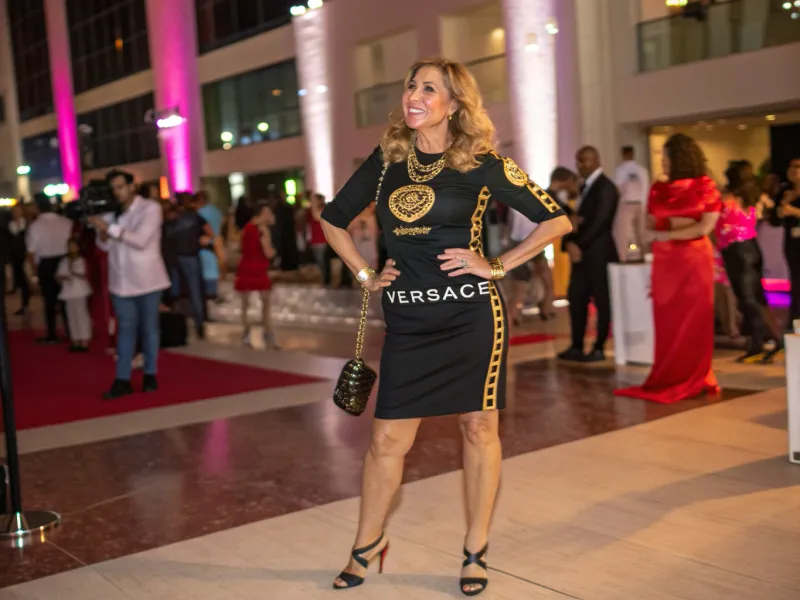
For some, attire is more than mere clothing; it’s a statement of wealth and status. Narcissistic individuals often use clothing to signal their financial success, ensuring brand logos are visible and recognized.
Picture this: at a community event where the focus is on camaraderie, one person stands out in luxury brands, and each logo is prominently displayed. This isn’t just about style; it’s a deliberate move to assert their wealth and distinction.
Psychologically, this behavior is tied to their need for validation through external markers of success. By donning luxury brands, they reinforce their self-image and demand attention. It’s not just about the clothes themselves, but what they represent in terms of power and prestige.
18. Exclusivity in Fashion Choices
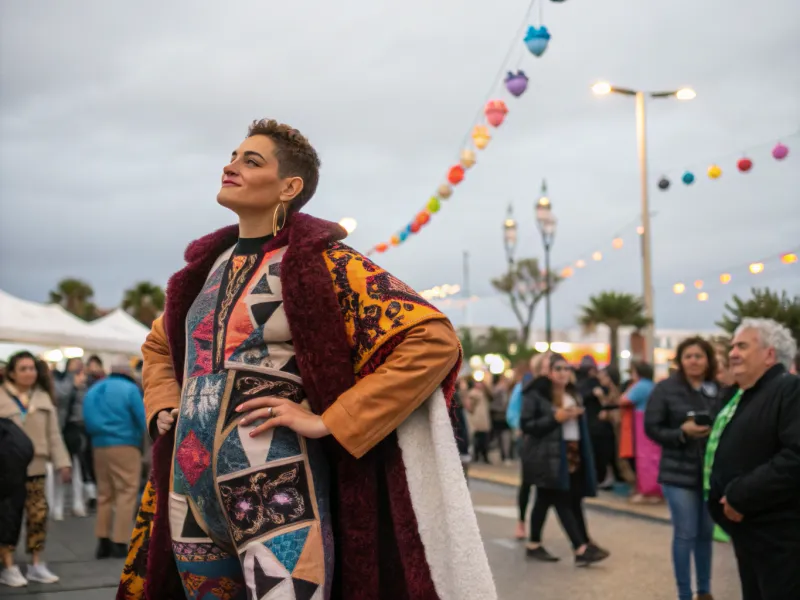
For some, off-the-rack just won’t do. Narcissistic individuals often seek exclusivity in their fashion choices, opting for custom-made or rare pieces that others can’t easily obtain.
Imagine a public gathering where most attendees wear readily available styles. One person, however, showcases a unique, custom-made outfit that draws all eyes. This isn’t just about being different; it’s about projecting uniqueness.
Psychologically, this behavior underscores their need for distinction and admiration. By choosing exclusive fashion, they communicate their self-perceived elite status and individuality. It’s a strategy to stand out and be seen as superior, ensuring they remain a focal point in any social setting.
19. Strategic Use of Color

For some, color is more than just a hue; it’s a tool for commanding attention. Narcissistic individuals often use color strategically to ensure they stand out and dominate visual space.
Consider a conservative business meeting where neutral tones prevail. One person, however, opts for a bright red outfit that immediately captures attention. This isn’t just about fashion; it’s a calculated move to ensure visibility.
Psychologically, this behavior reflects their desire to be the center of attention. By using bold colors, they project confidence and command the room, asserting their presence. It’s a way to reinforce their self-worth and ensure they remain memorable in the minds of others.
20. Preference for Monochrome Looks

For some, simplicity is key to sophistication. Narcissistic individuals often gravitate towards monochrome looks, believing they project an image of elegance and control.
Imagine a vibrant summer festival where colors abound, yet one person stands out in a completely black outfit. This isn’t just about preference; it’s a deliberate choice to assert a sense of authority and confidence.
Psychologically, this behavior reflects their need for control and a streamlined self-image. By choosing monochrome looks, they communicate a sense of sophistication and superiority. It’s about more than just color; it’s about crafting a cohesive and commanding image.
21. Use of Fashion to Intimidate
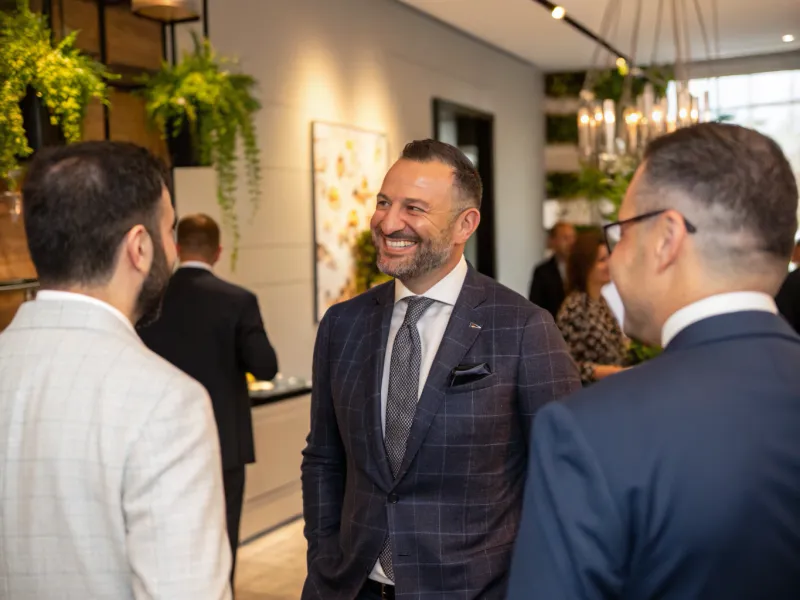
For some, fashion is a means to an end, a tool to assert dominance and intimidate others. Narcissistic individuals often choose attire that enhances their stature and projects authority.
Picture this: at a networking event, one person stands out in a sharply tailored suit, their presence felt in every interaction. This isn’t just about style; it’s a strategic move to intimidate and command respect.
Psychologically, this behavior ties into their need to maintain control and superiority. By using fashion to enhance their presence, they ensure they remain influential. It’s about leveraging clothes to reinforce their self-perceived dominance and power.
22. Attention to Rare Fabrics
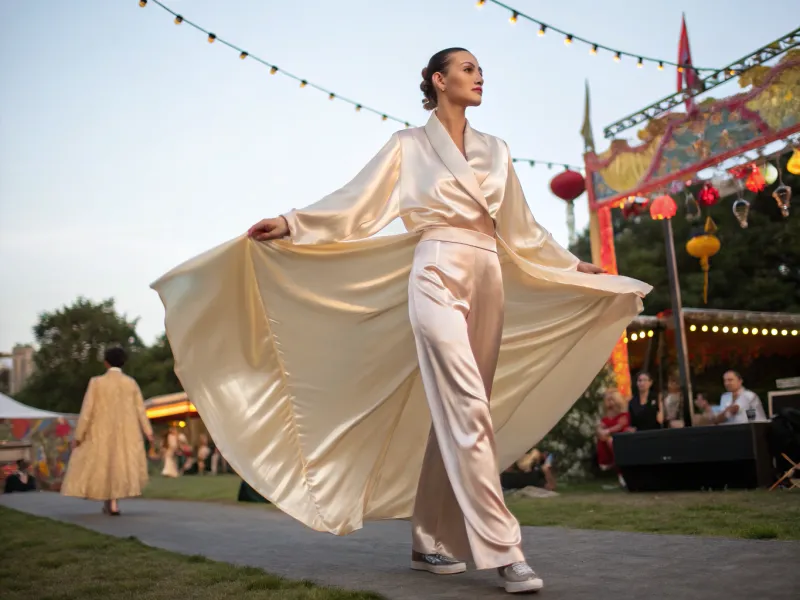
For some, the fabric isn’t just a material; it’s a statement of luxury and exclusivity. Narcissistic individuals often gravitate towards rare and luxurious fabrics to project their superior taste.
Imagine attending an outdoor festival where comfort is key, yet one person showcases a silk ensemble, emphasizing its quality with every movement. This isn’t just about comfort; it’s a declaration of refinement.
Psychologically, this behavior reflects their desire for admiration and distinction. By choosing rare fabrics, they communicate their self-perceived elevated status and exceptional taste. It’s about more than just luxury; it’s a strategy to differentiate and assert superiority through fashion.
23. Compulsion for Unique Styles
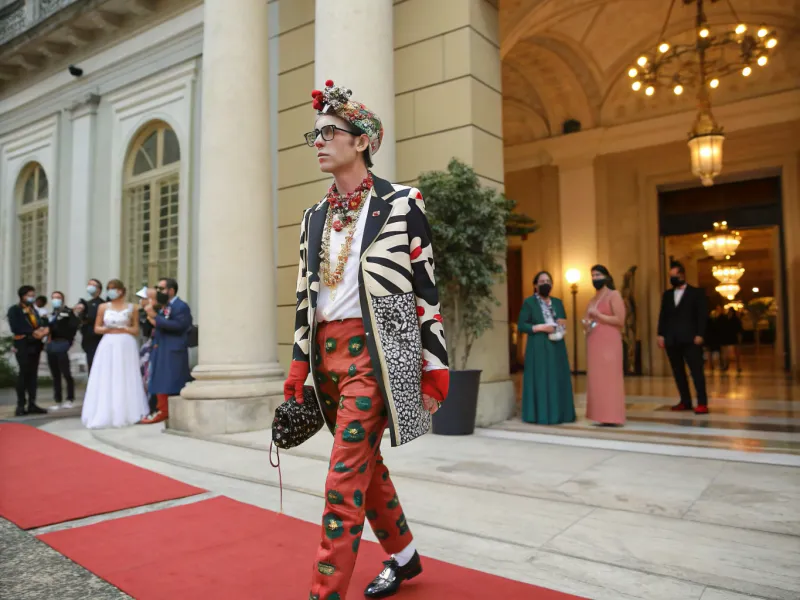
For some, blending in is not an option. Narcissistic individuals often feel compelled to choose unique and avant-garde styles that set them apart.
Imagine a traditional event where most people adhere to conventional styles. One person, however, steps out in an eclectic, avant-garde outfit that defies norms. This isn’t just about being different; it’s about making a statement.
Psychologically, this behavior underscores their need for attention and recognition. By opting for unique styles, they ensure they are noticed and remembered, feeding their self-worth. It’s not just about fashion; it’s about ensuring their presence is felt and admired.
24. Overemphasis on Signature Pieces
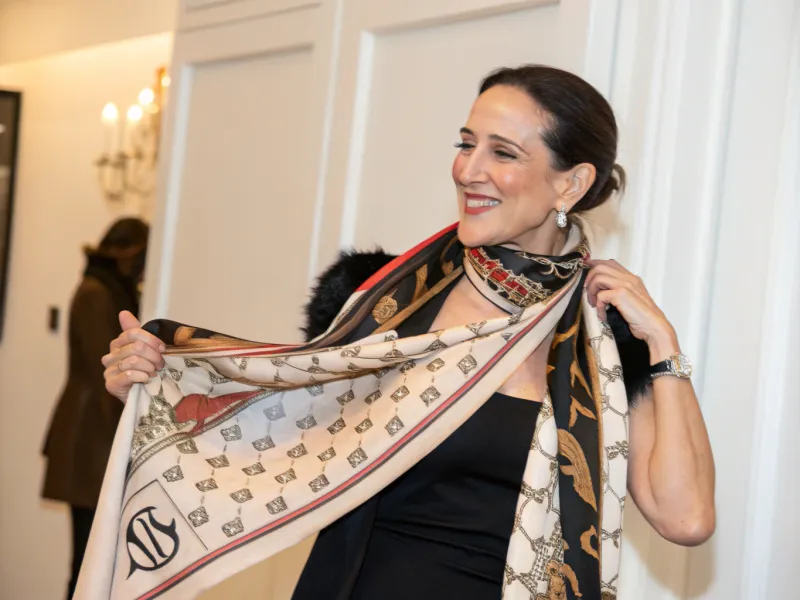
For some, having a signature piece isn’t just about style; it’s a part of their identity. Narcissistic individuals often overemphasize signature pieces, using them as trademarks that assert their uniqueness.
Consider someone who, at every event, prominently features the same signature scarf, ensuring it becomes a recognizable part of their persona. This isn’t just about fashion; it’s a calculated move to create a lasting impression.
Psychologically, this behavior reflects their need for recognition and a clear self-image. By highlighting signature pieces, they craft a distinct persona, ensuring they are memorable. It’s about more than just the piece; it’s about reinforcing their identity and place in the social landscape.
25. Deliberate Mismatching
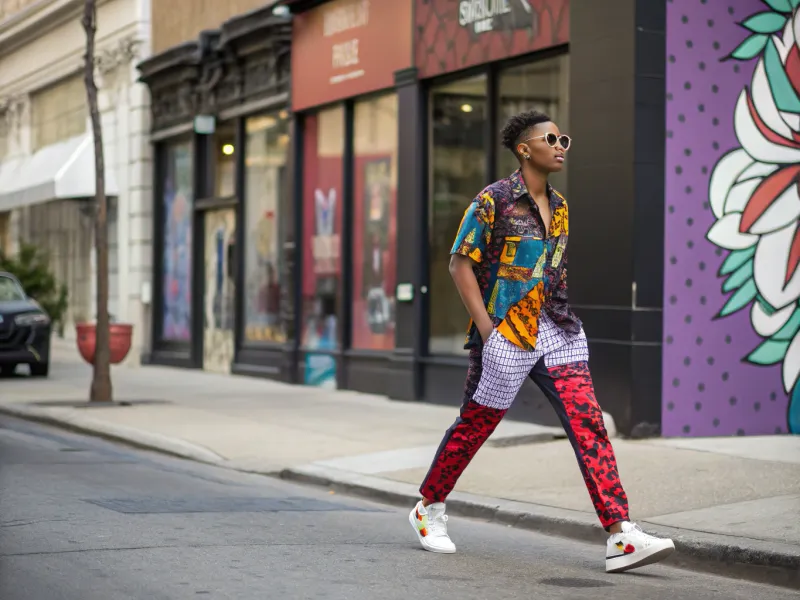
Deliberate mismatching in fashion is a subtle indicator of narcissism. This playful approach to fashion suggests confidence and a disregard for conventional norms.
Such individuals deliberately pair clashing patterns and colors, creating a look that demands attention and sparks conversation. This choice is often seen in trendy, fashion-conscious areas where individuality is celebrated.
The psychology behind mismatching is to project creativity and fearlessness. By breaking away from traditional fashion rules, they communicate their independence and unique perspective.

